While many of us have learned about the gods, goddesses and mythical structures that are part of ancient history, others have endeavored to investigate the truth behind it all. One of those people is filmmaker/engineer Alex Mott, creator and narrator of the fascinating documentary project THE RETHINKING SERIES.
Produced by Trash Arts Productions (the company behind RIGHT HERE, RIGHT NOW and THE MAKING OF), THE RETHINKING SERIES doesn’t rehash commonly known information about pyramids, kings and legends. Carefully researched and written by Mott, the series features interviews with respected experts like Patricia and Yousef Awyan, and geologist Suzan Moore.
Each episode reveals what can best be described as the “hidden history” of our civilization. As THE RETHINKING SERIES examines such diverse spots as Egypt, Peru, Bosnia, India and Lebanon, Mott’s discoveries may ultimately make viewers reconsider everything they’ve been taught about ancient history itself.
Viewers can find the first 4 episodes, plus an update on Mott’s initial Egypt findings, on THE RETHINKING SERIES’ YouTube page. Further episodes of the series are also in the works, while a GoFundMe crowd funding campaign is currently running to help Mott explore the intriguing mysteries of his next stop: Cambodia. (Links to both sites are at the end of this article.)

Egypt’s famed Giza Pyramids.
Among many topics, Mott describes both the extensive process of putting together THE RETHINKING SERIES, and the initial origins of its concept during his in-depth conversation with Snobby Robot.
SR: How was the show developed, and how did your initial trip to Egypt propel further development/production of the series itself?
Alex Mott (THE RETHINKING SERIES creator/narrator): The show was developed after a trip to Egypt in 2015 with the Khemit School of Ancient Mysticism. When I got back, I was planning to produce a 5 minute YouTube video with just voiceover and stills, but Trash Arts were so interested in the 4 hours of footage I’d collected, and said we could probably go one step further. We produced a 20 minute documentary, and put it online without knowing exactly what to expect. The positive feedback (we received on that video) encouraged us to produce another Rethinking episode from whatever country or ancient site was visited next.
SR: What (and/or who) initially inspired you to create the show and its concept?
AM: I was originally inspired by reading of claims that the ancient Egyptians had advanced technology and power tools. According to some, this is the only explanation for the manufacture of certain artifacts you see there. I’m a qualified engineer. I found this very interesting, and I also knew that I would never be able to know for certain if these claims were actually true without physically visiting these sites and seeing for myself. This, then, became the central concept of the show: The Rethinking Series compares the claims made to the evidence found.
SR: Each episode of the series is credited as a “Blackmud” gig. Thereʼs a very interesting story behind why that is, and how Egypt ultimately ties into it. Describe that story.
AM: In 2010, I had a problem with my internet connection. I phoned the tech support helpline and described the problem. “We know what that is,” they said. “We’ll send you some step-by-step instructions on how to get that fixed – which email address would you like us to use?” I was puzzled because I’d only ever had one email address, but tech support were adamant that I had two. I asked for the details.
The first email address turned out to be the one I’d always used, but the second one I’d never seen or heard of before (and it was one I didn’t add myself). This second email address was called “blackmud”. Naturally, I asked who put it there and how long it had been there. Tech support didn’t know the answer to either question, so I wrote to the head office of the ISP at the time. They wrote back stating that they didn’t know anything about it but could confirm that no messages had been sent or received by the “blackmud” email address – it was just “there”.

Deep inside the Red Pyramid in Egypt.
Short of hiring a private detective to find out more about this thing that was intriguing but didn’t actually seem to be doing anything, I had some fun online with my new secret identity. My friends found it quite amusing, but otherwise I didn’t think much more about it. By the time a few years had gone by, I’d practically forgotten about “blackmud”. Then in 2015, I went to Egypt.
From the list of numerous tour operators in Egypt, I chose The Khemit School of Ancient Mysticism for my first visit. Like me, TKSAM has their doubts about some parts of recorded history, and as to whether it was really the Egyptians who built the pyramids and the major sites and artifacts; they think that this work could have been produced by a much more ancient and advanced civilization known as the “Khemitians” – because “Khemit” is the original name for Egypt.
So, after a particularly full day of museums, temples and toolmarks, our tour group found ourselves in a clothing shop in Luxor, because TKSAM had offered us a free souvenir: a T-Shirt with whatever we wanted written (in hieroglyphs) in a cartouche on the front. “It can be your name, your nickname, your dog’s name, anything you want,” we were told. “Just tell the guy behind the counter – he’ll translate it into hieroglyphs and put it in your cartouche.” Perfect.
So when I was asked, “What do you want in your cartouche?” I, of course, said “blackmud”. The chap behind the counter then frowned, looked at me and shook his head. “What…Khemit?” He said. I asked him to please repeat himself. “Blackmud,” he said, “means Khemit”. It didn’t end there. When I got back from India, I was considering a theory of chemical stone softening after seeing the chisel marks in the walls of the Kailasa Temple.
I got hold of a chemist and asked him to name a chemical that would soften stone but not impair the cutting edge of a metal saw, drill or chisel for example. He returned with a list of hydrochloric acid, hydrofluoric acid and nitric acid. Hydrochloric acid is brick cleaner – I’ve used it myself and it dissolves certain stones, rather than softening them. Hydrofluoric acid I’ve never used, but nitric acid sounded interesting.

Inside a Serapeum box found in Saqqara, Egypt.
The chemist explained that if I wanted to make nitric acid (in ancient Egypt), I would have to find a good source of nitrogen and then basically distil it to create the acid. “Okay, where would I find this source of nitrogen?” I asked. “Well, is the soil particularly fertile in Egypt?” he asked. The alluvial deposits from the Nile are some of the most fertile soils in the world – also known as “blackmud”.
Blackmud still makes an appearance every now and then (the elusive “monatomic gold” may be derived from blackmud, along with other rare minerals). When I was last at (the Egyptian city of) Aswan, I actually popped down to the shore of Kalabsha Island and collected a sample.
SR: What sets THE RETHINKING SERIES apart from other educational documentary series?
AM: The feedback I’ve received on it has been very largely positive, and includes compliments like “honest and unbiased” and “evidence-based”. Viewers seem to appreciate the way the series “doesn’t leap to conclusions”. Blackmud and Trash Arts are not trying to convince anyone of anything; we’re simply asking, “Did you know about this?” “We think it’s interesting.”
The format of the show (part travel blog, part research – with a bit of humor thrown in whenever possible) sets it apart from other educational documentary series and the format itself has also produced positive feedback. The Rethinking Series is also an evolving process and makes no attempt to hide this. If an erroneous observation has been made in one episode, it will be addressed and corrected in a future episode.
SR: How will it complement other documentaries that focus on ancient history?
AM: Neither of the two current Rethinking: Egypt episodes focus on either The Great Pyramid or The Great Sphinx; i.e. the subjects of so many other documentaries about Egypt. My investigations tend to look at the less well known sites (Saqqara, Aswan for example) and because of this, The Rethinking Series offers a “peripheral” perspective on the subject of ancient history that will complement other documentaries by filling in the back ground gaps with well-documented research. Sometimes, this “peripheral” view can reveal more about the subject directly under scrutiny, or even produce a completely new path of research by itself.
SR: In what ways will watching THE RETHINKING SERIES benefit those who may already be familiar with the histories and textures of ancient sites (pyramids, mountains, etc.)?
AM: I’m reluctant to use the phrase ‘debunking’ but, by comparing the claims made versus the evidence found, this has happened as a natural process. Anyone starting on this path of research will have probably heard some of the more sensational claims made about our past and how this puzzling stonework was achieved.
The Rethinking Series has already managed to refute some of the more colorful of these claims, This may have prevented newcomers from being led on a possibly quite expensive wild goose chase, while encouraging them to only invest their time and money in sites with genuine mysteries.
The research, as a whole, is also pointing in the direction of the ancient equator. A full understanding of how and why so many of these ancient sites are connected will open up a world of new possibilities for those who have knowledge or experience of only a small number of sites, or perhaps sites in one country only.

In Egypt, an unfinished obelisk (or pillar) found in an Aswan quarry.
SR: In what ways will your discoveries challenge whatʼs been previously thought to be commonly accepted/taught about ancient sites around the world?
AM: This is a difficult question to answer right now as the research is dynamic, and new information (that can easily change a long-held embedded belief) can turn up at any time. When I started this research, I was looking for evidence of ancient aliens and ancient technology. The focus of the research then shifted by itself to seeds, fertility and magnetism.
Now, after spending 3 months investigating the theories of (renowned Khemitologist) Patricia Awyan, the focus has changed again and I can only say that the theory we’re working on now could change everything we think we know about the past. It’s huge, backed up scientific, physical, esoteric and symbolic evidence – and there is simply too much to go into here.
SR: Describe how you prepare each episode of the show, from research to interviews to filming. How do those elements ultimately come together in the finished product?
AM: The preparation of each show begins with research and identifying the key, most notable (or even completely outlandish) claims made about these ancient artifacts and sites, for example: “There are pyramids in Bosnia”; “The boxes in the (ancient Egyptian temple) Serapeum are machined flat to within microns.” I then find a tour group operating in the area, and l book a ticket.
When there, on site I’ll make every effort to test these claims (using specialist tools taken with me or purchased on site, if necessary) and document what I find as impartially as possible. Actually visiting these sites has, in many cases, supplied more than just addressing the key claims and at least one other unforeseen, but important, observation is usually made.
For example, I went to Egypt to investigate the precision of the Serapeum’s boxes, but left suspecting that it wasn’t actually the Egyptians who built them in the first place, and whoever did may have been wiped out by an ancient catastrophe. I went to Peru to investigate the construction techniques of the megalith walls, but all I was thinking about when I came back was the importance of agriculture.
Interviews depend entirely on who is available at the time and of course, whether or not they’re actually prepared to do one (this is very often unplanned and done on-site when a suitable opportunity arises). We also like to try new things in each episode, and the chances are that if we had an interview in the last episode, we’ll probably choose to do something different this time (an animation or music sequence, for example).
The most notable points gathered from the visit (planned and unplanned) are then selected, and I write a script of usually 3-4 sections. I then record the voiceover, give Trash Arts all the materials they need. Then we sit and refine the product, usually over 6-7 drafts until everyone’s happy.

The exposed joints of a wall, taken from Mott’s trip to Cusco, Peru.
SR: How does the research ultimately correspond to the final finished episodes of the series?
AM: I only ever consult with specialists in their field of study and/or those with a great deal of experience at these sites. Going down to fine detail (physically taking measurements/conclusive identification of very specific types of rock) can provide game-changing information, and this is shared in The Rethinking Series.
The research is as rigorous as it can be (with no budget) and the script is very carefully written to avoid misunderstandings and the potential dissemination of unfounded rumors. I run a tight ship, in other words, and this is reflected in the research and finished episodes of the Rethinking series.
SR: The first four episodes featured you examining various undiscovered aspects of ancient history in Egypt, Peru, Bosnia and India. Of those episodes, which was the most interesting to do and why?
AM: Although the walls in Peru and the Kailasa Temple in India are intriguing, Egypt is still the place with so much more (and probably still even more buried beneath the sand). The questions never seem to end and the physical evidence can throw up theories that are laughable at first, then not quite so laughable (the function of the Serapeum’s boxes, for example).
Although I was disappointed that the two claims I’d come to Egypt to research turned out to be untrue, I was then able to start thinking in a completely different direction to explain this ancient stone work, which has led me to here. I also went back to Egypt in 2017 for three months and each time you visit one of these sites, you see something you didn’t notice last time. It’s a magical place with so many secrets.
SR: What were some of the most notable things you learned during each trip?
AM: Egypt: There is nothing that connects the Egyptian civilization with pyramid construction. The Egyptians also may not have been the creators of many of the artefacts.
Lebanon: Whoever quarried the obelisks at Ba’albek knew how to move and transport 1,200 ton blocks of stone.
Bosnia: There are no pyramids in Bosnia; it’s a hoax designed to generate tourism. (Sorry.)
India: The ancient Indians knew far more about mathematics, science and philosophy than many are aware. They also either had a means of softening stone, or the stone at certain sites was naturally softer when the work was done.
Peru: The ancient Peruvians were excellent farmers who worked with nature to achieve their goals, rather than employing machines and artificial chemicals.

Alex Mott, creator/narrator of THE RETHINKING SERIES.
SR: As you explored each of the ancient sites in each episode, what were some of the biggest things you learned that you were previously unaware of?
AM: With the exception of Bosnia, the ancients who created these sites and artifacts seemed to have a more intuitive understanding of their environment and far more esoteric knowledge than they are credited for.
If you map out these sites on Google Earth, they seem to form an ancient equator, stretching from Easter Island (in the Pacific Ocean), through Nazca & Ollantaytambo (Peru), Giza (Egypt), and ending in Angkor Wat (Cambodia).
Many of these megalith sites may have actually been connected in the past, and this would account for some of the shared stone working techniques we find at sites that are sometimes separated by thousands of miles. It’s also very obvious from the study of all of these ancient sites that planet Earth has endured at least one very serious catastrophic event in the past.
SR: How did those discoveries challenge what you thought you knew, as well as everything you were previously taught, about ancient history and ancient sites?
AM: The things that I’ve seen and the conversations I’ve had during these travels have challenged everything I thought I knew about the past and human evolution. My last trip to Egypt provided yet more epic revelations and I now believe that I’m researching a version of history that hardly anyone knows anything about (N.B. not even the people you would expect to know). I’ll be producing a pilot on this vast subject matter in the future with the help of Patricia Awyan.
SR: Of all the episodes you researched/filmed, which was the most challenging to do and why?
AM: Probably Rethinking: India. For a start, it’s very hot. Sweat can drip in your eye or a bug can decide to investigate your ear during a perfect pan across the site. The cities are extremely noisy and congested, and it’s definitely not the place for those who prefer order and calm. The sheer volume of traffic badly affected the sound during (Indian fashion designer) Anu Nagappa’s interview and no other microphone was available at the time.
Part of the tour was cancelled due to flooding – and this would have included visiting a site with a mysterious stone box that was definitely going to be featured in the finished episode. Even with the Kailasa footage and stills, I was short of the material I needed. Then we visited Hampi, and just like magic, everything else needed was found at this very interesting site.
SR: Youʼre currently hoping to raise funds on GoFundMe for a trip to Cambodia, which will be the focus of the next episode, as well as where youʼve been asked to speak publicly about your efforts. Once there, what will you be exploring, and what do you hope to discover should the crowdfunding campaign be successful?
AM: Angkor Wat, Cambodia lies on the other end of the ancient equator mentioned above. It’s a must-see because of this apparent connection with the other sites, and the research already done. If the GFM campaign is successful, I will be looking very closely at the construction techniques used in building these temples, but also investigating the all-important location of this site. Preliminary research indicates that not all of the temples are in perfect alignment and, given that everything at these ancient sites is “done for a reason”, I want to at least offer a theory regarding this deliberate lack of alignment.

“Chinese characters found in India’s Ajanta Caves suggest that these cultures mixed and shared ideas long ago,” Mott says.
SR: Are there any further episodes of the show planned, and if so, which countries/ancient sites will you be filming in?
AM: Yes, we are planning to produce Rethinking: Cambodia after visiting Angkor Wat in December (funding dependent). I would also like to visit Scotland to see the vitrified forts, and Ireland to see the Round Towers. Footage from other sites of interest around England has already been collected and may be used in a future Rethinking: British Isles.
SR: Which countries, and ancient sites, would you most like to explore in further episodes?
AM: Going back to the ancient equator mentioned above, this is only a relatively recent discovery due to the accessibility of Google Earth. While other sites have been found that coincidentally lie on this ancient equator, no one has explored the ancient equator itself.
There may well be tunnels, cities in jungles, or even underwater features on this line that no one has seen before. To answer this question: any and all countries that lie on the ancient equator.
SR: Do you eventually foresee this series being used as an educational tool in classrooms, or possibly being picked up for broadcast?
AM: In its existing format (minus a few of the more colorful YouTube quotes), I see no reason why The Rethinking Series couldn’t be used for both education and broadcast.
SR: Overall, what are your primary hopes for the showʼs success, and in how it will reach audiences who want to learn more about undiscovered aspects of ancient history?
AM: Check out the “blackmud” story and you may suspect that it’s not exactly “me” that’s doing any of this; I just seem to be going with the flow at the moment. If I do have any kind of hand on the keel, my primary goal is to generate a large following on YouTube, social media and streaming platforms.
Maybe someone will appreciate what we’ve managed to do on a budget of zero, and ask themselves what we could be capable of if properly funded. It would then be a dream job to assemble my “A-team” of multi-disciplined researchers, produce full-length documentaries for broadcast and explore everything else our planet’s past has to offer.
To contribute to Mott’s GoFundMe campaign for Rethinking: Cambodia, visit:
https://www.gofundme.com/rethinking-cambodia
YOUTUBE: https://www.youtube.com/watch?v=jIVuLon7mT0&list=PLZdXgKeoEbLpWfALE4elvxRvYCYHaG9_5

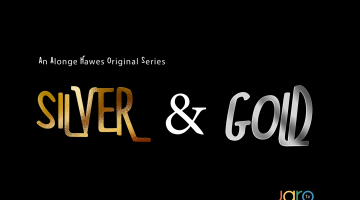

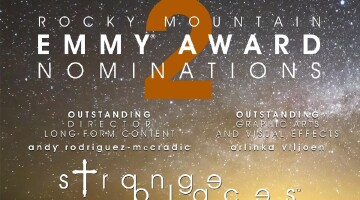
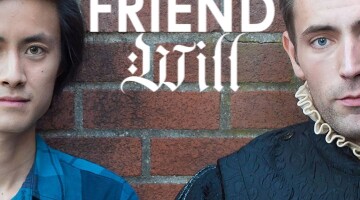
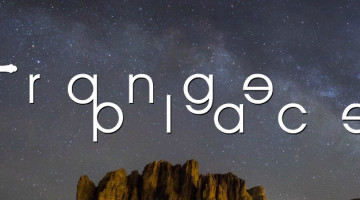
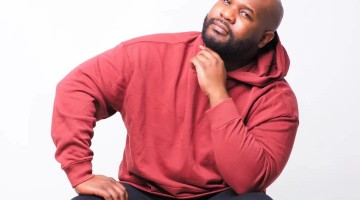
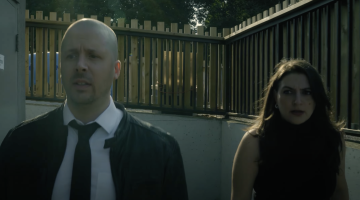
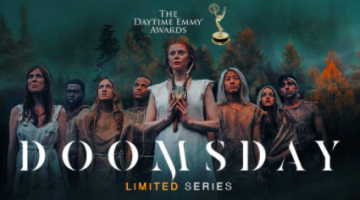
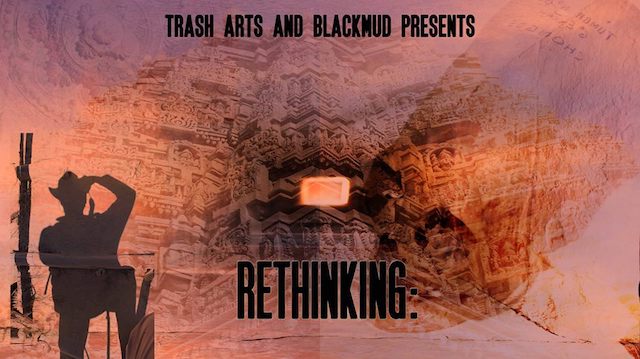
No Comment